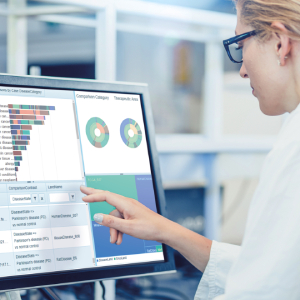














Static licenses and network licenses are available for QIAGEN CLC Workbenches, modules and QIAGEN CLC Assembly Cell. This flexibility means you can choose the type and number of licenses that meet your particular needs, from running a single product on a single machine, through using many products on many machines, in a department or across an organization.
The information on this page describes considerations when choosing between static and network licenses. Please refer to the End User License Agreement for information about rights and restrictions that apply to the software.
Using a static license, the software can be run on a particular computer. Such licenses are not associated with a user account, only with the machine the software is running on.
The use of static licenses is only supported on systems with a maximum of 64 logical cores. To run CLC Workbenches or the CLC Assembly Cell on machines with more than 64 logical cores, network licenses are needed.
Network licenses, sometimes known as floating licenses, are a flexible and efficient licensing solution. A network licenses is checked out when the software application is started up, and then returned to the pool of available licenses when the software is shut down again, making them available for others to use. They are not tied to particular machines by default, and thus suit situations where multiple people wish to use the software on various machines. They are especially cost efficient where the software is used by different users only periodically.
The number of network licenses for a particular product is the maximum number of instances of that product that can be used simultaneously.
Access to particular licenses can finely controlled. For example, licenses can be reserved for particular users or groups, or for use on only particular machines, based on host name or IP address (for individual computers or a subnet). The latter can be useful where licenses should be available to only one lab, for example.
Network licenses support the use of analysis software on machines with more than 64 logical cores.
How does a network license work?
Network licenses are hosted by the CLC Network License Manager software. Once the CLC Network License Manager software is running, with network licenses installed, those licenses can be checked out from any client computer with access to the license server.
The status of the network licenses, including how many licenses are available and how many are in use, can be monitored using tools supplied with the CLC Network License Manager software.
Using network licenses when not connected to the network
Network licenses for CLC Workbenches and modules can be borrowed for a period of time. No network access is needed during the borrowing period, after the license has been borrowed. Borrowed licenses can be returned early if desired.
For those frequently working without network access, static licenses may be the most appropriate option.
Documentation resources related to network licenses
CLC Network License Manager system requirements